Chiang Mai has changed a lot in the past hundred years, from the crumbling former capital of a once powerful kingdom to the budding modern metropolis of today. Once in a while you'll see an old picture hanging in a restaurant or for sale in a market, but here we've collected some of our favorites along with their backstories. Most of these come from the CMU library's Picture Lanna website, which holds over 600 photos from an amazing guy named Boonserm Satrabhaya. It even has detailed descriptions of each photo in English. For more cool old stuff in Chiang Mai, take a look at our article Chiang Mai's Hidden Relics.
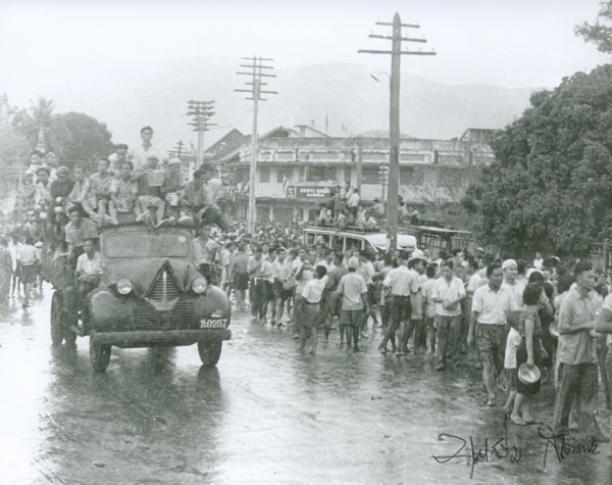
A common trope in Chiang Mai is that foreigners made Songkran ridiculous, but these old photos show that it's been a huge party for quite a while. The Picture Lanna site has 26 more old photos of Songkran for your perusal.
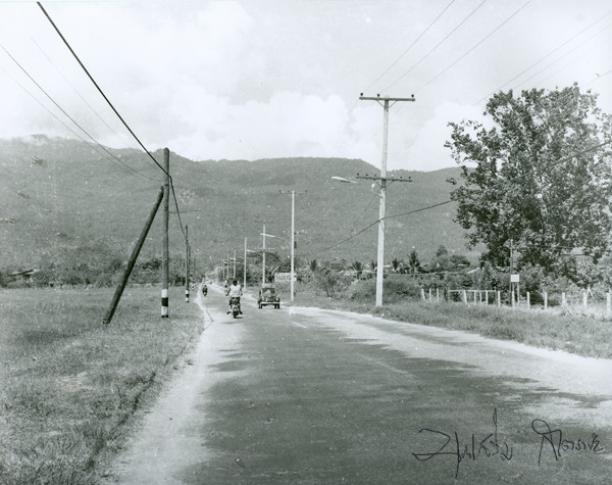
Huay Kaew just past Nimmanhaemin. For a comparison with the current view, check this out.
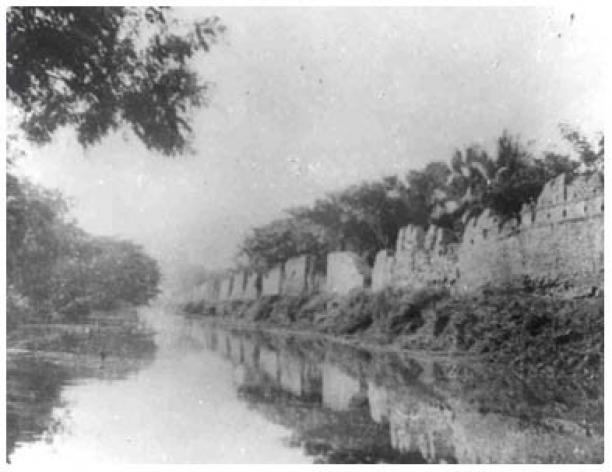
Although Chiang Mai's moat was originally built during the city's founding in 1296, the ruins you see today are from the early 1800s. This picture shows its condition nearly a hundred years after it was built, in disrepair but still largely intact.
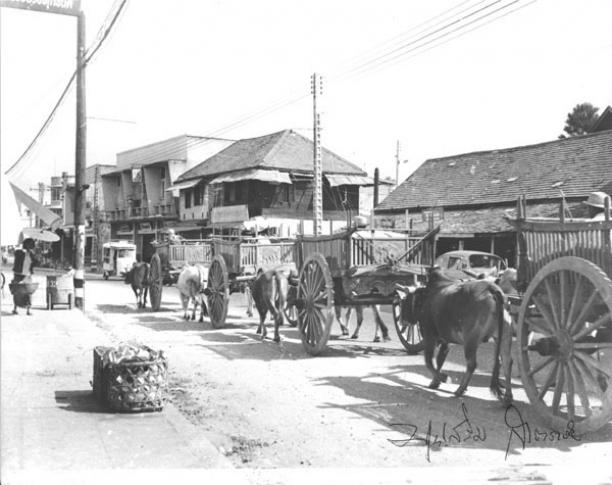
By the mid-1960s Chiang Mai had begun to develop into a modern city, connected to the world by highway, rail and an airport. As its streets filled with cars and tuktuks, slow-moving ox carts became a nuisance (not to mention they pooped everywhere). In 1967 the municipal government banned ox carts from entering the city. This photo shows the last of them leaving along Chang Moi road, signalling the end of an era. Compare with a recent picture here.
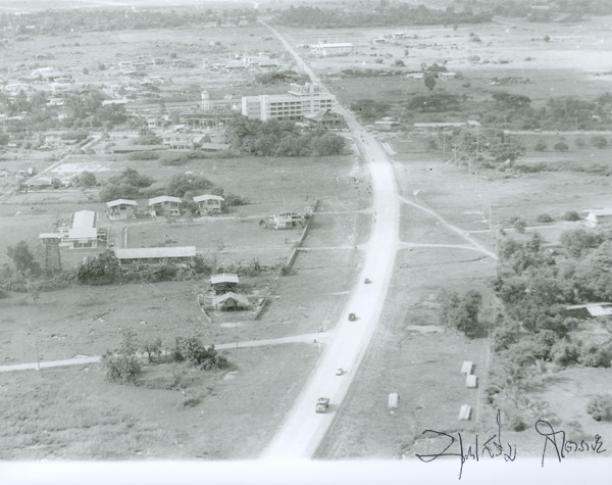
This photo, taken from above Wat Jed Yod, shows the newly constructed super highway looking south down Nimmanhaemin (the Amari hotel and Huay Kaew are visible at the top).
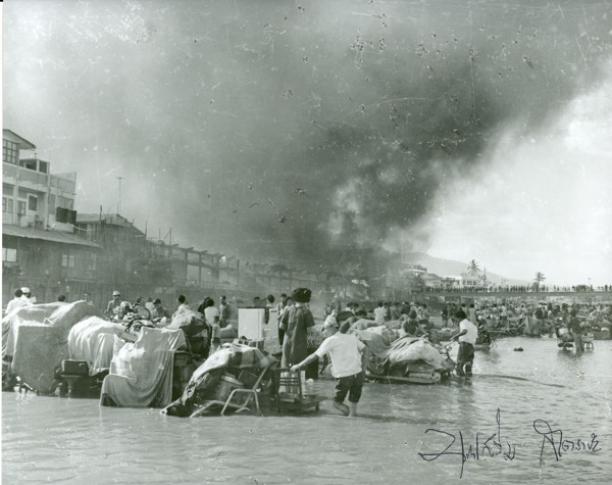
On February 13, 1968, an enormous fire ripped through Chiang Mai's largest market. The wooden buildings and fabric shops fueled the flames and before long the entire thing burned to the ground. This photo shows merchants hauling their goods into the Ping River to save them from the blaze. The market was quickly rebult in the style you see today.
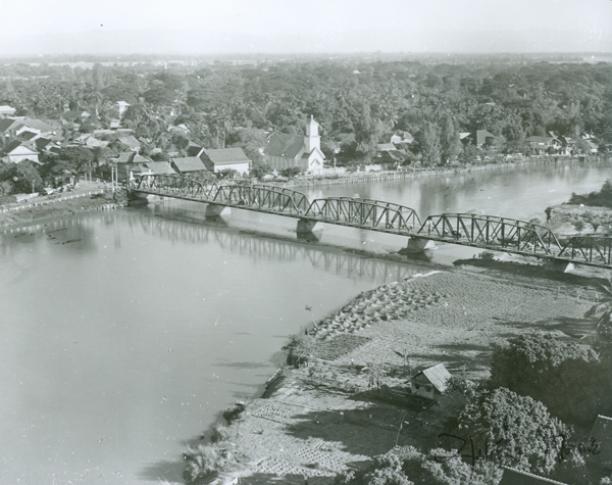
An aerial view of the Ping River and Narawat Bridge (at the end of Thapae Rd) looking southeast. The white church near the top is still standing. Note the iron construction of the bridge - today it has been replaced by concrete, but the original bridge was moved to the outskirts of Pai and is what you see today when coming from Chiang Mai. Also note the riverbank gardens in the bottom of the picture, which would have been fertilized by the seasonal flooding of the river. Today they have been replaced by a concrete wall.
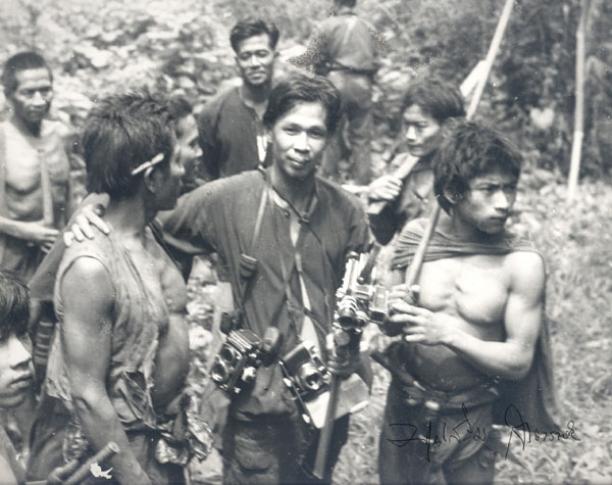
The Mlabri are one of the last, if not the last nomadic hunter-gatherers in Southeast Asia. Poorly understood, they lack organized religion, do not build permanent structures and allegedly their language only counts up to the number ten. Today only 100-300 survive on the Thai-Lao border. Boonserm visited them in Nan province in 1959 , taking photographs of their unique lifestyle when they had almost no contact with the modern world.

Another from Songkran long past. Before the concrete walls squeezed the Ping River into what you see today, it was low enough to walk across in the dry season.
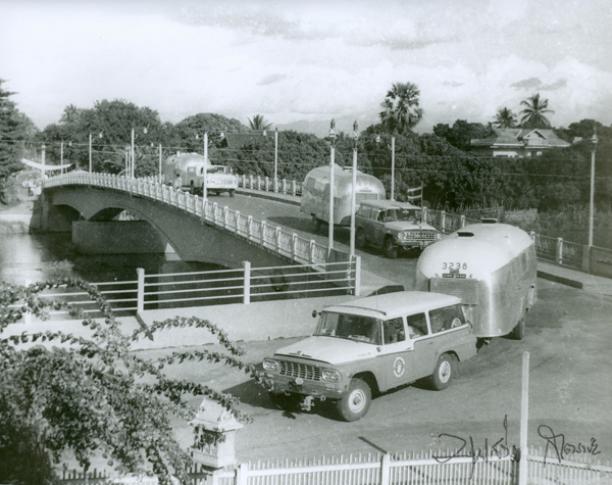
A convoy of American tourists arrive in Chiang Mai driving what are probably the biggest cars in the city, having come all the way from Malaysia. Compare with a recent picture.


